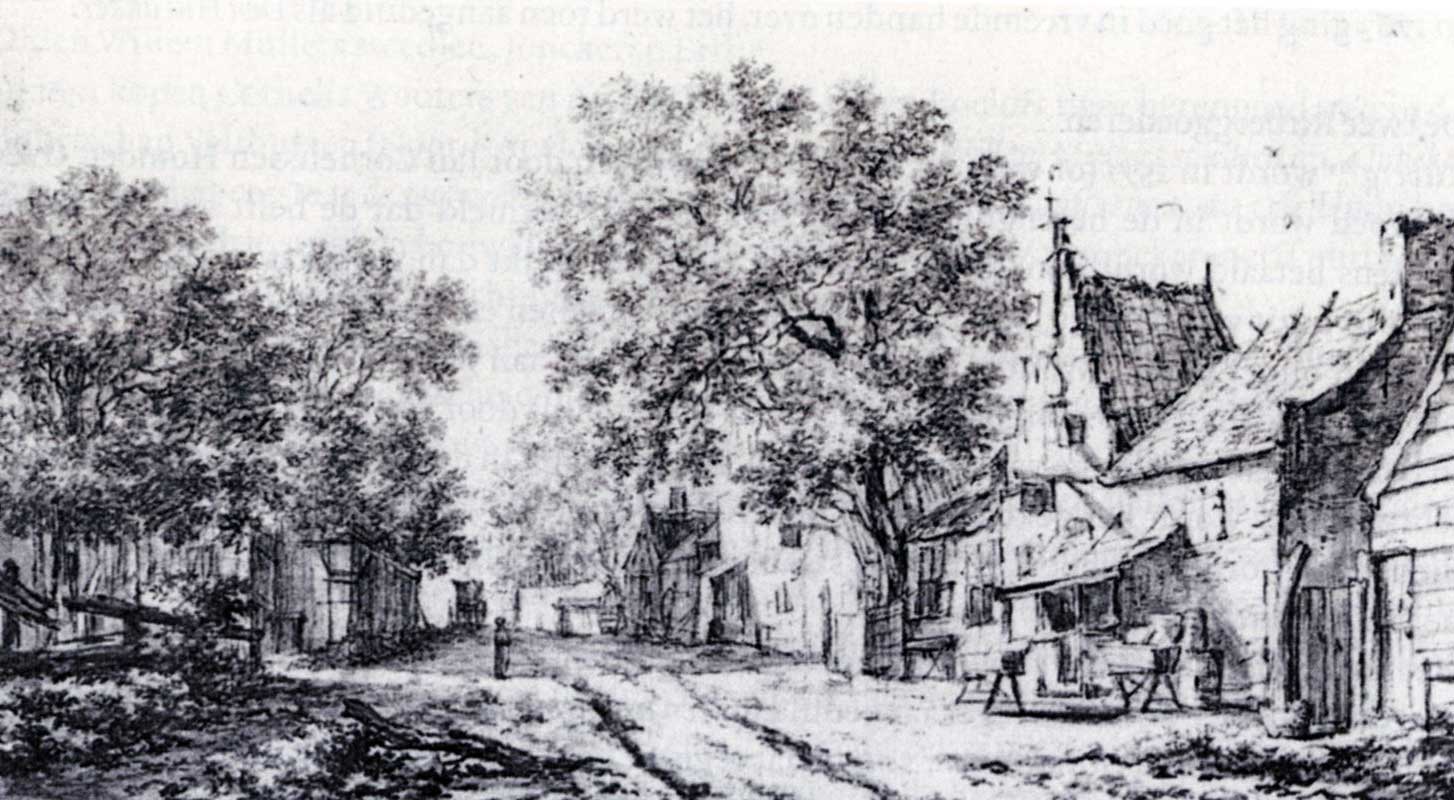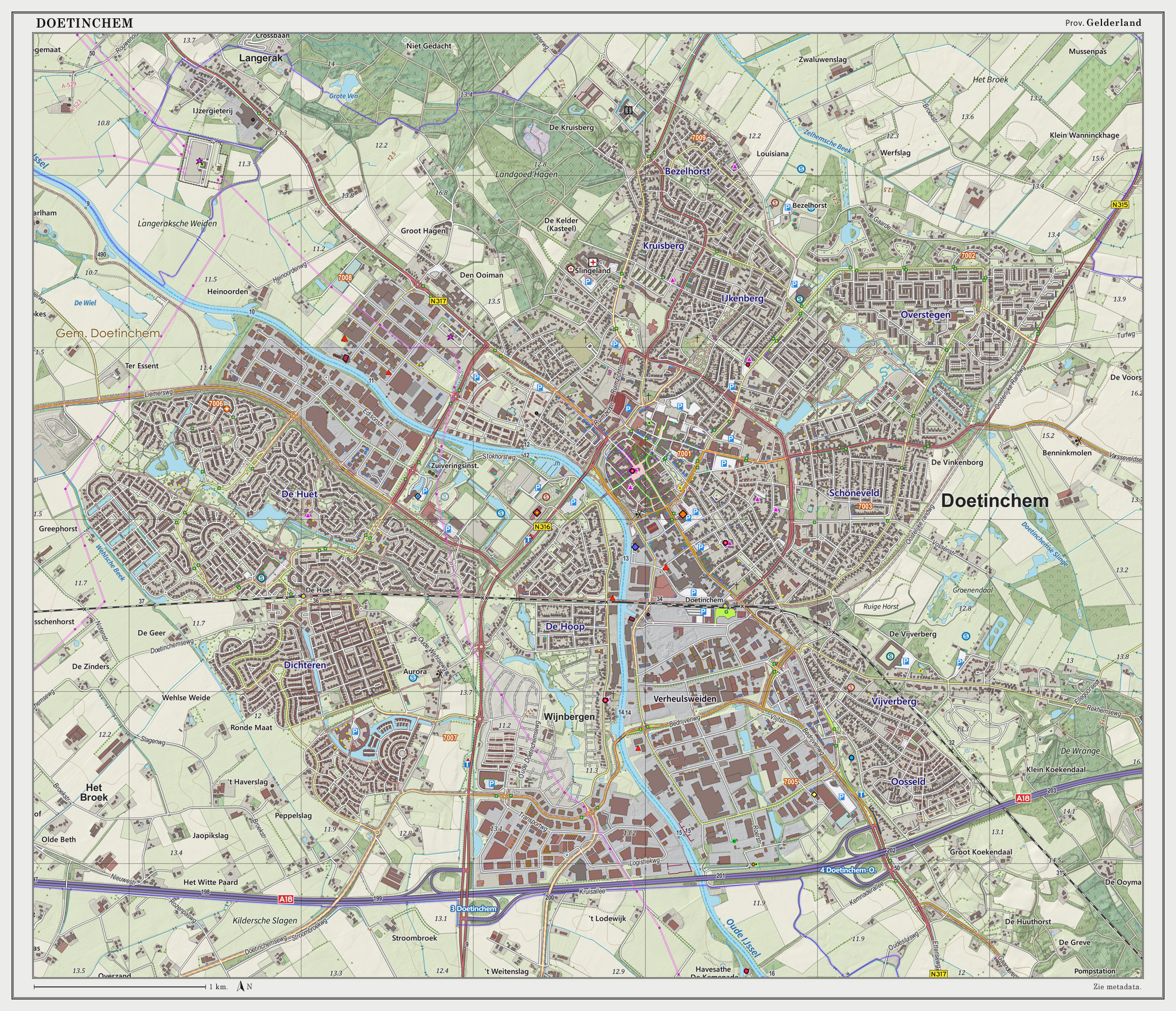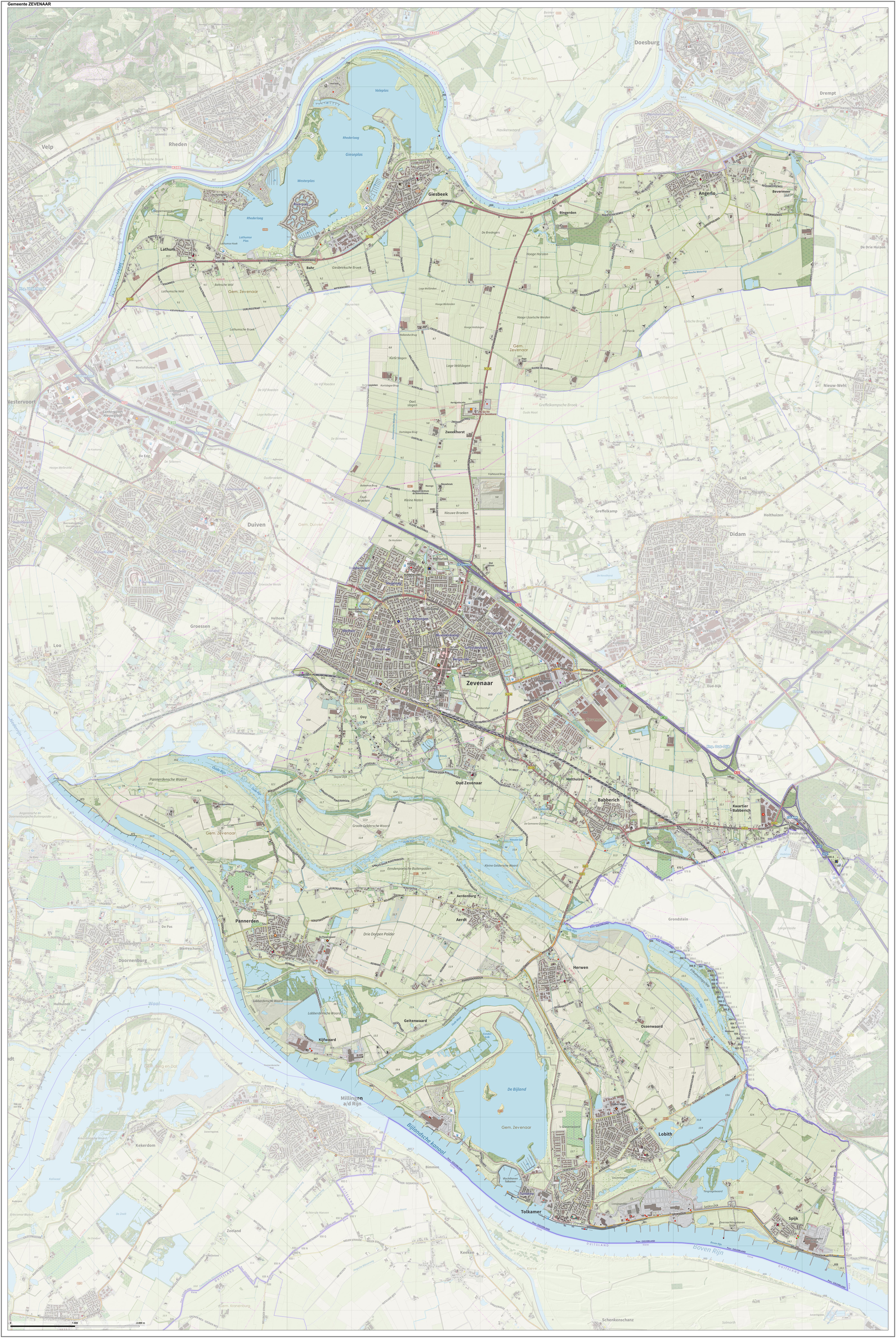|
Gelderland
Gelderland (), also known as Guelders () in English, is a province of the Netherlands, occupying the centre-east of the country. With a total area of of which is water, it is the largest province of the Netherlands by land area, and second by total area. Gelderland shares borders with six other provinces (Flevoland, Limburg, North Brabant, Overijssel, South Holland and Utrecht) and the German state of North Rhine-Westphalia. The capital is Arnhem (pop. 159,265); however, Nijmegen (pop. 176,731) and Apeldoorn (pop. 162,445) are both larger municipalities. Other major regional centres in Gelderland are Ede, Doetinchem, Zutphen, Harderwijk, Tiel, Wageningen, Zevenaar, and Winterswijk. Gelderland had a population of 2,084,478 as of November 2019. It contains the Netherlands's largest forest region (the Veluwe), the Rhine and other major rivers, and a significant amount of orchards in the south ( Betuwe). History Historically, the province dates from states of t ... [...More Info...] [...Related Items...] OR: [Wikipedia] [Google] [Baidu] |
Ons Gelderland
"Ons Gelderland" (Our Gelderland) is the anthem of the province of Gelderland in the Netherlands. There are two versions of the song. The first, 'Ons Gelderland' is sung the most, but the second, 'het Geldersch Volkslied', is considered by many to be the official anthem. Since Gelderland is a province, and not a country, the officiality of either one remains undecided. Nowadays, the provincial government of Gelderland displays 'Ons Gelderland' on their website. In the past they have stated 'het Geldersch Volkslied' to be the official anthem. A remarkable detail to note is that each version can be sung to the same tune. Since the texts have already been put to different tunes, this is a surprisingly convenient coincidence for many songwriters in Gelderland. Lyrics ''Text and music by C.J.C. Geerlings.'' :Waar der beuken breede kronen :Ons heur koele schaduw biên; :Waar we groene dennebosschen, :Paarse heidevelden zien; :Waar de blonde roggeakker :En het beekje ons oog bekoor ... [...More Info...] [...Related Items...] OR: [Wikipedia] [Google] [Baidu] |
Wageningen
Wageningen () is a municipality and a historic city in the central Netherlands, in the province of Gelderland. It is famous for Wageningen University, which specialises in life sciences. The municipality had a population of in , of which many thousands are students from over 150 countries. Demograpics Inhabitants by nationality 71,68% is Dutch, 28,32% has a migration background. Geography Wageningen is situated on the north bank of the Nederrijn (the Dutch portion of the Lower Rhine) part of the Gelderse valley (Dutch: Gelderse Vallei) and the Veluwe, of which the southwest hill is called the ''Wageningse Berg''. Wageningen can be reached by car from highways A12 via the N781, A15 via the N233 and N225, and A50 via the N225, and from the Ede-Wageningen railway station via a 20-minute bus drive to the Wageningen central terminal (see below)., ''Topographic map of the municipality of Wageningen, July 2013 (click to enlarge)'' History The oldest known settlements in t ... [...More Info...] [...Related Items...] OR: [Wikipedia] [Google] [Baidu] |
Apeldoorn
Apeldoorn (; Dutch Low Saxon: ) is a municipality and city in the province of Gelderland in the centre of the Netherlands. It is located about 60 km east of Utrecht, 60 km west of Enschede, 25 km north of Arnhem and 35 km south of Zwolle. The municipality of Apeldoorn, including villages like Beekbergen, Loenen, Ugchelen and Hoenderloo, had a population of 165,525 on 1 December 2021. The western half of the municipality lies on the Veluwe ridge, with the eastern half in the IJssel valley. The city of Apeldoorn The oldest known reference to Apeldoorn, then called Appoldro, dates from the 8th century. The settlement came into being at the point where the old road from Amersfoort to Deventer crossed that from Arnhem to Zwolle. A 1740 map refers to it as A''pp''eldoorn.Stenvert, R. et al. (2000). ''Monumenten in Nederland: Gelderland'', p. 14 and 68–77. Zwolle: Waanders Uitgevers. Close by is the favourite country-seat of the royal family of the Netherlands called the ... [...More Info...] [...Related Items...] OR: [Wikipedia] [Google] [Baidu] |
States Of Gelderland
The States of Gelderland ( nl, Staten van Gelderland, ) are the States-Provincial for the Dutch province of Gelderland. It forms the legislative body of the province. Its 55 seats are distributed every four years in provincial elections. From 2005 till early 2019, it was chaired by Clemens Cornielje ( VVD). Current composition Since the 2019 provincial elections, the distribution of seats of the Provincial Council of Gelderland has been as follows: Kiesraad See also *References
|
Doetinchem
Doetinchem (; Low Saxon: ) is a city and municipality in the east of the Netherlands. It is situated along the Oude IJssel (Old IJssel) river in a part of the province of Gelderland called the Achterhoek. The municipality had a population of in and consists of an area of of which is water. This makes Doetinchem the largest town (by population) in the Achterhoek. On 1 January 2005, a municipal restructuring merged the neighbouring municipality of Wehl as well as the Zelhelmse Broek area with Doetinchem. Population centres The local government organization in the Netherlands is complex and fine-grained (see municipality and Govt Stats, with municipalities being divided into various entities. The municipality of Doetinchem consists of: The city ('stad'): * Doetinchem The neighborhoods ('wijken'): * Centrum * Bezelhorst * Dichteren * Overstegen * De Huet * De Hoop * Oosseld * Schöneveld & Muziekbuurt The townships ('buurtschappen'): * Gaanderen * Wehl * IJzevoo ... [...More Info...] [...Related Items...] OR: [Wikipedia] [Google] [Baidu] |
Zevenaar
Zevenaar () is a municipality and a city in the Gelderland province, in the eastern Netherlands near the border with Germany. Population centres * Angerlo *Babberich * Giesbeek *Lathum *Ooy * Oud-Zevenaar *Zevenaar History The earliest signs of human activity are remnants of a 700 BC settlement found near present-day Zevenaar. In 1049, Emperor Hendrik III donated a large amount of land to five warlords of which the leader was named Bartholomeus II of Sevenaer. They founded a castle to protect the old Roman settlements from the Germans. In 1355 Sevenaer passed from the control of the county/Duchy of Guelders (to which the modern Dutch province of Gelderland refers) to the Duchy of Cleves (Cleveland). In 1487, the duke of Cleves gave Sevenaer city rights. Sevenaer was an important strategic point –this border area between Gelderland and Cleveland, was the border between the regions that would, over the centuries, be controlled from different centers of power – the modern st ... [...More Info...] [...Related Items...] OR: [Wikipedia] [Google] [Baidu] |
Arnhem
Arnhem ( or ; german: Arnheim; South Guelderish: ''Èrnem'') is a Cities of the Netherlands, city and List of municipalities of the Netherlands, municipality situated in the eastern part of the Netherlands about 55 km south east of Utrecht. It is the capital of the Provinces of the Netherlands, province of Gelderland, located on both banks of the rivers Nederrijn and Sint-Jansbeek, which was the source of the city's development. Arnhem had a population of 163.972 on 1 December 2021, which made it one of the larger cities of the Netherlands. The municipality is part of the Arnhem–Nijmegen metropolitan area, which has a combined number of 774,506 inhabitants on 31 January 2022. Arnhem is home to the Hogeschool van Arnhem en Nijmegen, ArtEZ Institute of the Arts, Netherlands Open Air Museum, Airborne Museum 'Hartenstein', Royal Burgers' Zoo, NOC*NSF and National Sports Centre Papendal. The north corner of the municipality is part of the Hoge Veluwe National Park. It is approximate ... [...More Info...] [...Related Items...] OR: [Wikipedia] [Google] [Baidu] |
Nijmegen
Nijmegen (;; Spanish and it, Nimega. Nijmeegs: ''Nimwèège'' ) is the largest city in the Dutch province of Gelderland and tenth largest of the Netherlands as a whole, located on the Waal river close to the German border. It is about 60 km south east of Utrecht and 50 km north east of Eindhoven. Nijmegen is the oldest city in the Netherlands, the second to be recognized as such in Roman times, and in 2005 celebrated 2,000 years of existence. Nijmegen became a free imperial city in 1230 and in 1402 a Hanseatic city. Since 1923 it has been a university city with the opening of a Catholic institution now known as the Radboud University Nijmegen. The city is well known for the International Four Days Marches Nijmegen event. Its population in 2022 was 179,000; the municipality is part of the Arnhem–Nijmegen metropolitan area, with 736,107 inhabitants in 2011. Population centres The municipality is formed by the city of Nijmegen, incorporating the former villages ... [...More Info...] [...Related Items...] OR: [Wikipedia] [Google] [Baidu] |
Zutphen
Zutphen () is a city and municipality located in the province of Gelderland, Netherlands. It lies some 30 km northeast of Arnhem, on the eastern bank of the river Ijssel at the point where it is joined by the Berkel. First mentioned in the 11th century, the place-name appears to mean "south fen" ( in modern Dutch). In 2005, the municipality of Zutphen was merged with the municipality of Warnsveld, retaining its name. In , the municipality had a population of . History In about 300 AD, a Germanic settlement was the first permanent town on a complex of the low river dunes. Whereas many such settlements were abandoned in the early Middle Ages, Zutphen, on its strategic confluence of IJssel and Berkel, stayed. After the incorporation of the IJssel lands in Charlemagne's Francia, Zutphen became a local centre of governance under the Count of Zutphen. The Normans raided and ravaged it in 882. Afterwards, a circular fortress was built to protect the budding town against Vik ... [...More Info...] [...Related Items...] OR: [Wikipedia] [Google] [Baidu] |
Provinces Of The Netherlands
There are twelve provinces of the Netherlands (), representing the administrative layer between the national government and the local municipalities, with responsibility for matters of subnational or regional importance. The most populous province is South Holland, with just over 3.7 million inhabitants as of January 2020, and also the most densely populated province with . With 383,488 inhabitants, Zeeland has the smallest population. However Drenthe is the least densely populated province with . In terms of area, Friesland is the largest province with a total area of . If water is excluded, Gelderland is the largest province by land area at . The province of Utrecht is the smallest with a total area of , while Flevoland is the smallest by land area at . In total about 10,000 people were employed by the provincial administrations in 2018. The provinces of the Netherlands are joined in the Association of Provinces of the Netherlands (IPO). This organisation promotes the co ... [...More Info...] [...Related Items...] OR: [Wikipedia] [Google] [Baidu] |
Harderwijk
Harderwijk (; Dutch Low Saxon: ) is a Municipalities of the Netherlands, municipality and city of the Netherlands. It is served by the Harderwijk railway station. Its population centres are Harderwijk and Hierden. Harderwijk is on the western boundary of the Veluwe. The southeastern half of the municipality is largely forests. History Harderwijk received City rights in the Netherlands, city rights from Count Otto II of Guelders in 1231. A defensive wall surrounding the city was completed by the end of that century. The oldest part of the city is near where the streets Hoogstraat and Grote Poortstraat now are. Around 1315 the city was expanded southwards, which included the construction of what is now called the Grote Kerk (Great Church). A second, northward expansion took place around 1425. Particularly along the west side of town, much of the wall still exists but often not in entirely original form. That also goes for the only remaining city gate, the Vischpoort (Fish Gate ... [...More Info...] [...Related Items...] OR: [Wikipedia] [Google] [Baidu] |
Winterswijk
Winterswijk (; also known as ''Winterswiek'' or ''Wenters'') is a municipality and a town in the eastern Netherlands. It has a population of and is situated in the Achterhoek, which lies in the easternmost part of the province of Gelderland in the Netherlands. It was also known as ''Winethereswick'', ''Winriswic'' or ''Wenterswic''; the Anglo Saxon '' wich'' or ''wic'' means the living place of a certain person. The person would likely have been called ''Wenether'', ''Winitar'' or ''Winter''. Geography Winterswijk is located in east of the province of Gelderland in the east of the Netherlands. It is part of the region of Achterhoek. History Founded around 1000 AD it remained an isolated farming community until 1830 when the road from Borken to Zutphen via Winterswijk and Groenlo was built. Around 1840 many emigrated to America — Michigan in particular. After 1870 the town became a centre for textiles, such as spinning and weaving and indeed the Tricot fabriek employed a ... [...More Info...] [...Related Items...] OR: [Wikipedia] [Google] [Baidu] |









